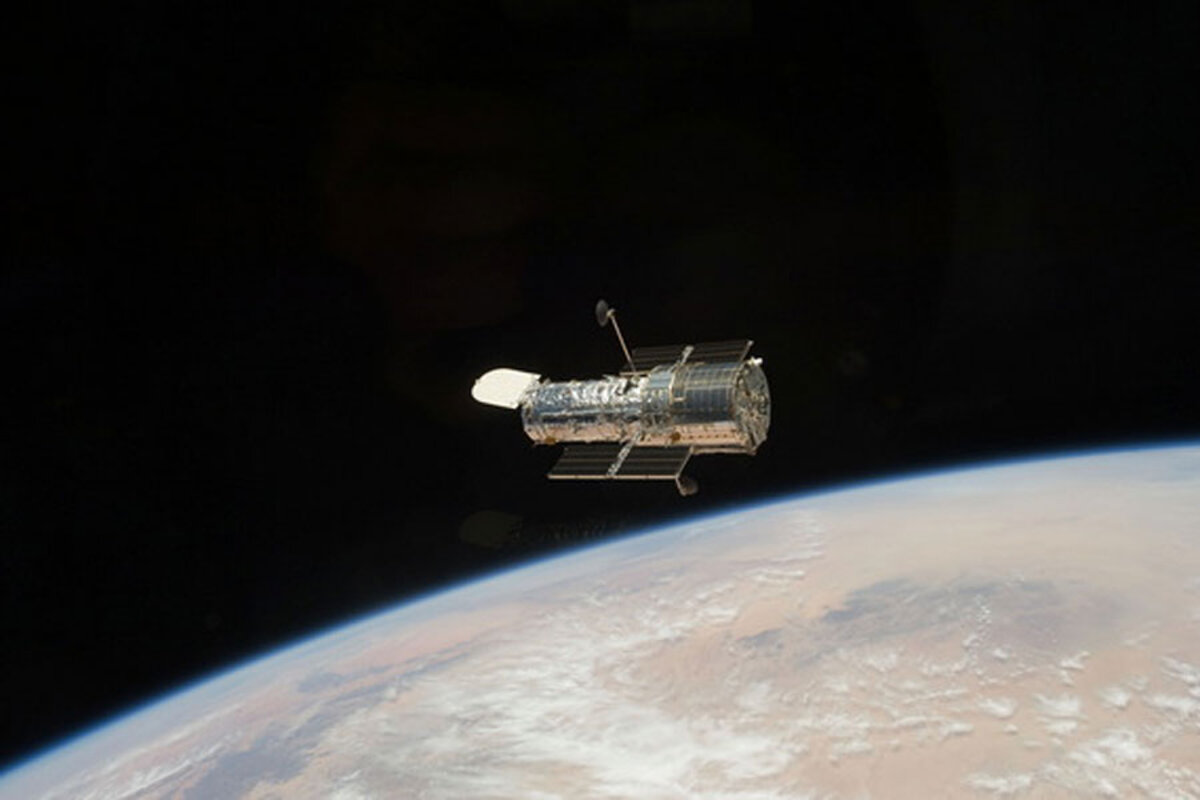Will the Hubble telescope's successor find alien life?
Loading...
The iconic Hubble Space Telescope turns 25 this month, and getting the ball rolling on a life-hunting successor instrument would be a fitting birthday present, one prominent researcher argues.
Hubble, a joint project of NASA and the European Space Agency (ESA), blasted off aboard the space shuttle Discovery on April 24, 1990. Spacewalking astronauts fixed a serious problem with the telescope's optics in 1993, and Hubble has been transforming astronomers' understanding of the cosmos — and bringing gorgeous images of into laypeople's lives —ever since.
"It has really allowed people to participate in the excitement of discovery," said Mario Livio, an astrophysicist based at the Space Telescope Science Institute in Baltimore, which operates Hubble's science program. []
"Hubble images have become part of our culture," Livio told Space.com. "I regard this as an incredible contribution."
While the venerable Hubble will likely be able to keep studying the heavens for at least five more years, it's now time to start planning out a future space telescope that will tackle the next big frontier in space science, Livio says — the search for signs of life beyond our neck of the cosmic woods.
"Hubble has taught us that to answer the most intriguing questions in astrophysics, we must think big and put scientific ambition ahead of budgetary concerns," he wrote in a commentary piece published online today (April 15) in the .
"In my view, the next priority should be the beyond our solar system," Livio added. "A powerful space telescope that can spot biological signatures in the atmospheres of Earth-like exoplanets would be a worthy successor."
Hubble's immediate successor is NASA's $8.8 billion (JWST), which is due to launch in 2018. The infrared-optimized JWST will be able to study the atmospheres of some nearby planets discovered by the Transiting Exoplanet Survey Satellite, or TESS, which NASA aims to launch in 2017.
The agency is also developing a potential space-telescope mission called WFIRST/AFTA (short for Wide Field Infrared Survey Telescope–Astrophysics Focused Telescope Assets). WFIRST/AFTA, which could launch around 2024 if it gets the final go-ahead, would continue the hunt for , among several other major tasks.
But Livio has something more ambitious in mind: A space telescope with a primary mirror at least 39 feet (12 meters) wide, with vision 25 times sharper than that of Hubble. (For comparison, the main mirrors of Hubble, WFIRST/AFTA and JWST are 7.9 feet [2.4 m], 7.9 feet and 21.3 feet [6.5 m] wide, respectively.)
Such a powerful instrument could scan the skies of enough to place "meaningful statistical constraints" on the abundance or rarity of alien life throughout the Milky Way galaxy, according to Livio.
"A large sample of planets — around 50 — would have to be tested," he wrote in the Nature commentary. "Calculations show, for example, that if no biosignatures are detected in more than about three dozen Earth analogues, the probability of remotely detectable extrasolar life in our galactic neighborhood is less than about 10 percent."
The Association of Universities for Research in Astronomy is expected to release a report this June on such a potential telescope, Livio wrote, urging the community to take action to help make the mission a reality.
"First, NASA, ESA and other potential international partners should convene a panel to examine such a project," he wrote. "Technology-development studies should be accelerated to make a launch around 2030 plausible. The search for life must be prioritized in the next U.S. and international decadal surveys that guide national funding decisions about missions."
Livio said he's not advocating any particular design for such a space telescope; he just wants to inspire his colleagues to "think big," and to build some momentum for a mission that could help humanity better understand its place in the universe.
"Many scientists would agree that the question of, 'Is there extrasolar life?' is one of the most intriguing questions in science today." Livio told Space.com. "So let's try to actually answer that question, and do what it takes to answer it, as opposed to maybe taking baby steps that would just push the answer into the more distant future."
Follow Mike Wall on Twitter �����Ի���. Follow us ,�����ǰ�. Originally published on .
Copyright 2015 , a Purch company. All rights reserved. This material may not be published, broadcast, rewritten or redistributed.




